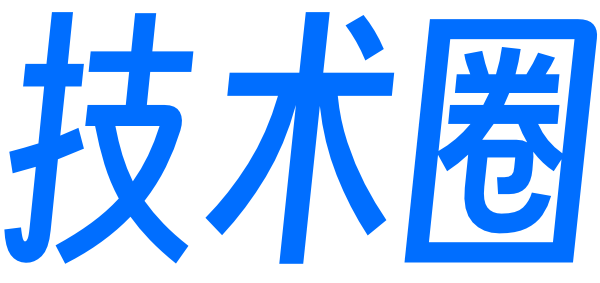Golang Context 的核心实现
1.基础筑基
1.1 基于线程的编程语言中的一些设计
1.1.1 ThreadGroup
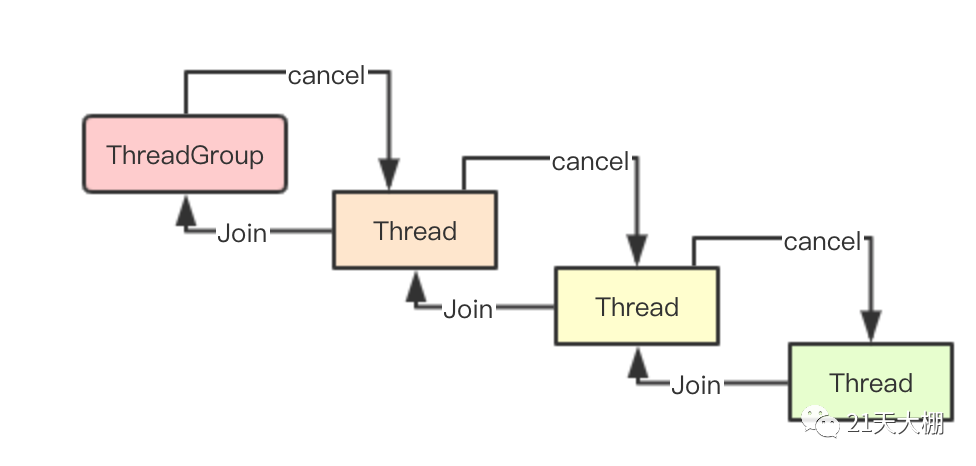 ThreadGroup是基于线程并发的编程语言中常用的一个概念,当一个线程派生出一个子线程后通常会加入父线程的线程组(未指定线程组的情况下)中, 最后可以通过ThreadGroup来控制一组线程的退出等操作, 然后在go语言中goroutine没有明确的这种parent/children的关系,如果想退出当前调用链上的所有goroutine则需要用到context
ThreadGroup是基于线程并发的编程语言中常用的一个概念,当一个线程派生出一个子线程后通常会加入父线程的线程组(未指定线程组的情况下)中, 最后可以通过ThreadGroup来控制一组线程的退出等操作, 然后在go语言中goroutine没有明确的这种parent/children的关系,如果想退出当前调用链上的所有goroutine则需要用到context
1.1.2 ThreadLocal
在基于线程的编程语言语言中,通常可以基于ThreadLocal来进行一些线程本地的存储,本质上是通过一个Map来进行key/value的存储,而在go里面并没有ThreadLocal的设计,在key/value传递的时候,除了通过参数来进行传递,也可以通过context来进行上下文信息的传递
1.2 context典型应用场景
| 场景 | 实现 | 原理 |
|---|---|---|
| 上下文信息传递 | WithValue | 通过一个内部的key/value属性来进行键值对的保存,不可修改,只能通过覆盖的方式来进行值得替换 |
| 退出通知 | WithCancel | 通过监听通知的channel来进行共同退出的通知 |
1.3 上下文数据的递归获取
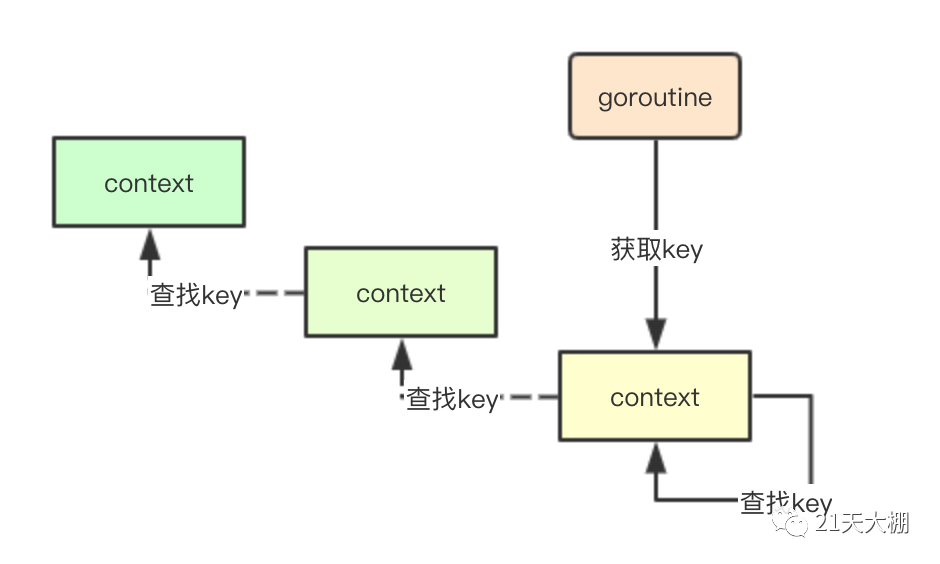 因为在go的context里面并没有使用map进行数据保存,所以实际获取的时候,是从当前层开始逐层的进行向上递归,直至找到某个匹配的key
因为在go的context里面并没有使用map进行数据保存,所以实际获取的时候,是从当前层开始逐层的进行向上递归,直至找到某个匹配的key
其实我们类比ThreadGroup,因为goroutine本身并没有上下级的概念,但其实我们可以通过context来实现传递数据的父子关系,可以在一个goroutine中设定context数据,然后传递给派生出来的goroutine
1.4 取消的通知
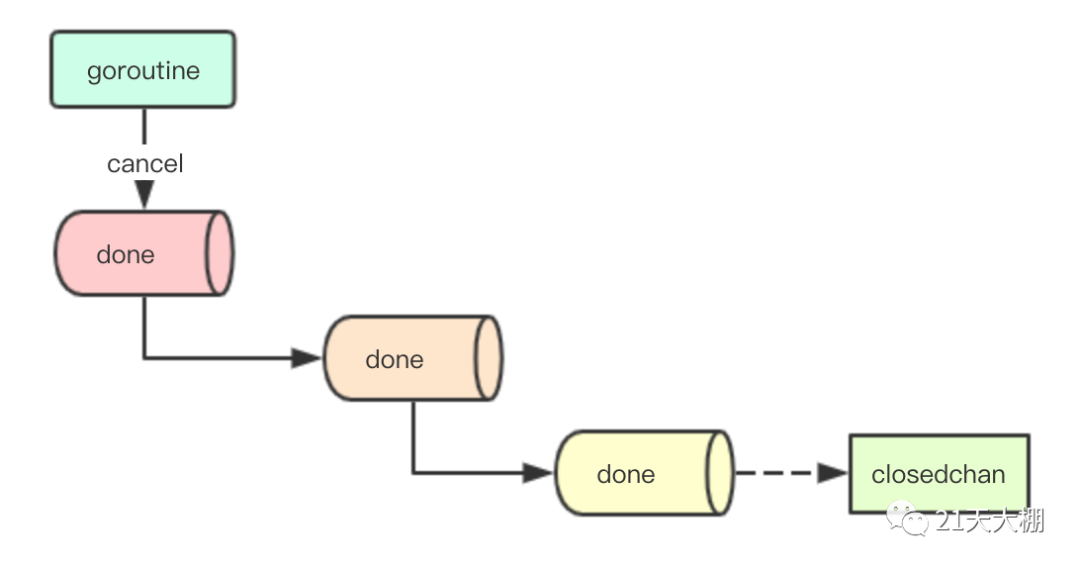 既然通过context来构建parent/child的父子关系,在实现的过程中context会向parent来注册自身,当我们取消某个parent的goroutine, 实际上上会递归层层cancel掉自己的child context的done chan从而让整个调用链中所有监听cancel的goroutine退出
既然通过context来构建parent/child的父子关系,在实现的过程中context会向parent来注册自身,当我们取消某个parent的goroutine, 实际上上会递归层层cancel掉自己的child context的done chan从而让整个调用链中所有监听cancel的goroutine退出
那如果一个child context的done chan为被初始化呢?那怎么通知关闭呢,那直接给你一个closedchan已经关闭的channel那是不是就可以了呢
1.5 带有超时context
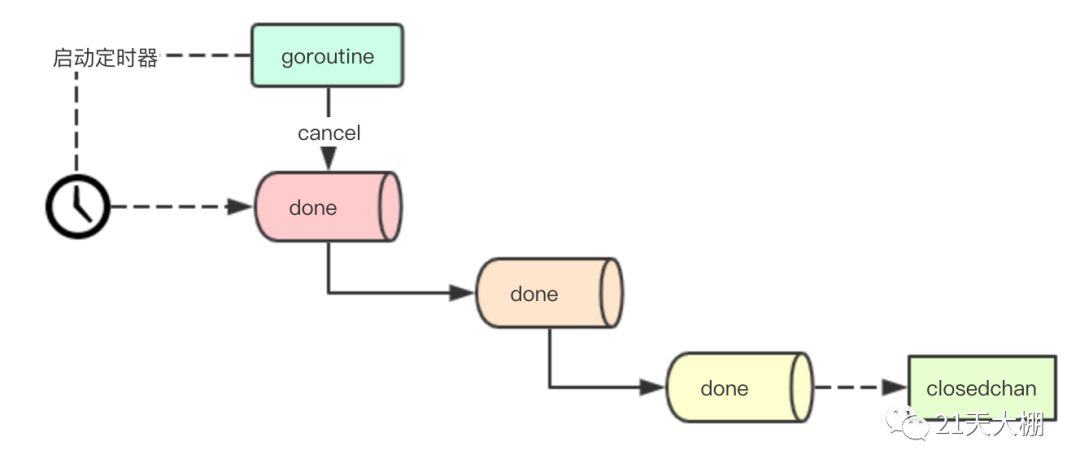 如果要实现一个超时控制,通过上面的context的parent/child机制,其实我们只需要启动一个定时器,然后在超时的时候,直接将当前的context给cancel掉,就可以实现监听在当前和下层的额context.Done()的goroutine的退出
如果要实现一个超时控制,通过上面的context的parent/child机制,其实我们只需要启动一个定时器,然后在超时的时候,直接将当前的context给cancel掉,就可以实现监听在当前和下层的额context.Done()的goroutine的退出
1.6 Background与TODO
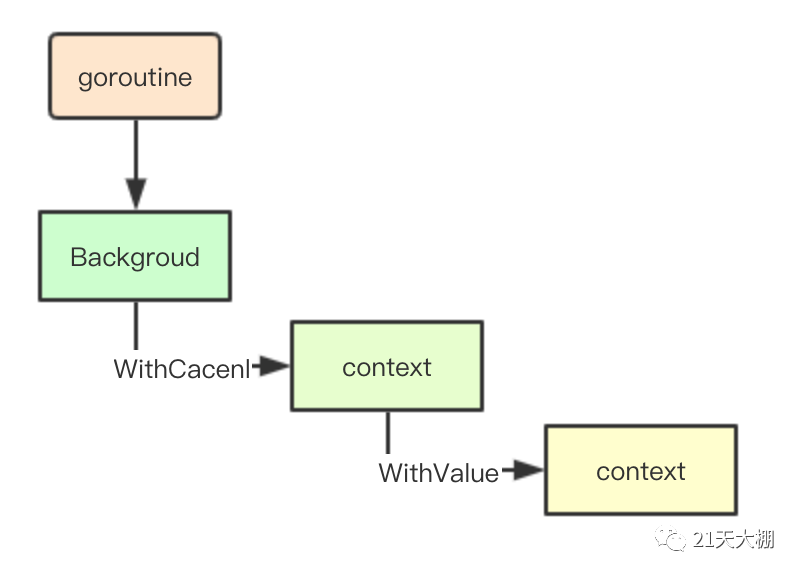 Backgroud其实从字面意思就很容易理解,其实构建一个context对象作为root对象,其本质上是一个共享的全局变量,通常在一些系统处理中,我们都可以使用该对象作为root对象,并进行新context的构建来进行上下文数据的传递和统一的退出控制
Backgroud其实从字面意思就很容易理解,其实构建一个context对象作为root对象,其本质上是一个共享的全局变量,通常在一些系统处理中,我们都可以使用该对象作为root对象,并进行新context的构建来进行上下文数据的传递和统一的退出控制
那TODO呢?通常我们会给自己立很多的todo list,其实这里也一样,我们虽然构建了很多的todo list, 但大多数人其实啥也不会做,在很多的函数调用的过程中都会传递但是通常又不会使用,比如你既不会监听退出,也不会从里面获取数据,TODO跟Background一样,其背后也是返回一个全局变量
1.7 不可变性
通常我们使用context都是做位一个上下文的数据传递,比如一次http request请求的处理,但是如果当这次请求处理完成,其context就失去了意义,后续不应该继续重复使用一个context, 之前如果超时或者已经取消,则其状态不会发生改变
2. 源码实现
2.1 context接口
type Context interface {// Deadline返回一个到期的timer定时器,以及当前是否以及到期Deadline() (deadline time.Time, ok bool)// Done在当前上下文完成后返回一个关闭的通道,代表当前context应该被取消,以便goroutine进行清理工作// WithCancel:负责在cancel被调用的时候关闭Done// WithDeadline: 负责在最后其期限过期时关闭Done// WithTimeout:负责超时后关闭doneDone() <-chan struct{}// 如果Done通道没有被关闭则返回nil// 否则则会返回一个具体的错误// Canceled 被取消// DeadlineExceeded 过期Err() error// 返回对应key的valueValue(key interface{}) interface{}}
2.2 emptyCtx
emptyCtx是一个不会被取消、没有到期时间、没有值、不会返回错误的context实现,其主要作为context.Background()和context.TODO()返回这种root context或者不做任何操作的context
type emptyCtx intfunc (*emptyCtx) Deadline() (deadline time.Time, ok bool) {return}func (*emptyCtx) Done() <-chan struct{} {return nil}func (*emptyCtx) Err() error {return nil}func (*emptyCtx) Value(key interface{}) interface{} {return nil}func (e *emptyCtx) String() string {switch e {case background:return "context.Background"case todo:return "context.TODO"}return "unknown empty Context"}
比较有意思的实现时emptyCtx的String方法,该方法可以返回当前context的具体类型,比如是Background还是TODO, 因为background和todo是两个全局变量,这里通过取其地址来进行对应类型的判断
2.3 cancelCtx
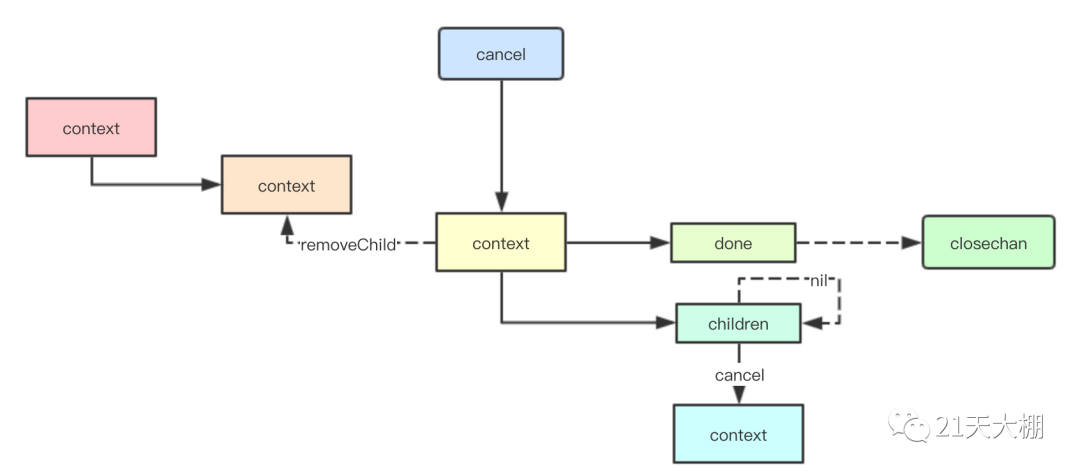
2.3.1 结构体
cancelCtx结构体内嵌了一个Context对象,即其parent context,同时内部还通过children来保存所有可以被取消的context的接口,后续当当前context被取消的时候,只需要调用所有canceler接口的context就可以实现当前调用链的取消
type cancelCtx struct {Contextmu sync.Mutex // protects following fields 保护属性done chan struct{} // created lazily, closed by first cancel callchildren map[canceler]struct{} // set to nil by the first cancel callerr error // set to non-nil by the first cancel call}
2.3.2 Done
Done操作返回当前的一个chan 用于通知goroutine退出
func (c *cancelCtx) Done() <-chan struct{} {c.mu.Lock()if c.done == nil {c.done = make(chan struct{})}d := c.donec.mu.Unlock()return d}
2.3.3 cancel
func (c *cancelCtx) cancel(removeFromParent bool, err error) {if err == nil {panic("context: internal error: missing cancel error")}// context一旦被某个操作操作触发取消后,就不会在进行任何状态的修改c.mu.Lock()if c.err != nil {c.mu.Unlock()return // already canceled}c.err = errif c.done == nil {c.done = closedchan} else {// close当前chanclose(c.done)}// 调用所有children取消for child := range c.children {child.cancel(false, err)}c.children = nilc.mu.Unlock()// 是否需要从parent context中移除,如果是当前context的取消操作,则需要进行该操作// 否则,则上层context会主动进行child的移除工作if removeFromParent {removeChild(c.Context, c)}}
2.4 timerCtx
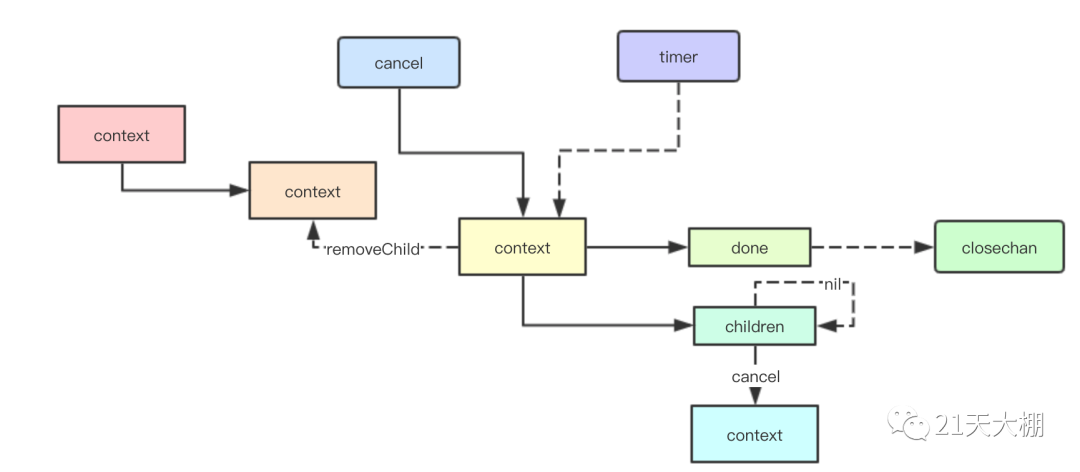 timerCtx主要是用于实现WithDeadline和WithTimer两个context实现,其继承了cancelCtx接口,同时还包含一个timer.Timer定时器和一个deadline终止实现
timerCtx主要是用于实现WithDeadline和WithTimer两个context实现,其继承了cancelCtx接口,同时还包含一个timer.Timer定时器和一个deadline终止实现
2.4.1 结构体
timerCtx
type timerCtx struct {cancelCtxtimer *time.Timer // timer定时器deadline time.Time //终止时间}
2.4.2 取消方法
取消方法就很简单了首先进行cancelCtx的取消流程,然后进行自身的定时器的Stop操作,这样就可以实现取消了
func (c *timerCtx) cancel(removeFromParent bool, err error) {c.cancelCtx.cancel(false, err)if removeFromParent {// Remove this timerCtx from its parent cancelCtx's children.removeChild(c.cancelCtx.Context, c)}c.mu.Lock()if c.timer != nil {c.timer.Stop() // 停止定时器c.timer = nil}c.mu.Unlock()}
2.5 valueCtx
其内部通过一个key/value进行值得保存,如果当前context不包含着值就会层层向上递归
type valueCtx struct {Contextkey, val interface{}}func (c *valueCtx) String() string {return fmt.Sprintf("%v.WithValue(%#v, %#v)", c.Context, c.key, c.val)}func (c *valueCtx) Value(key interface{}) interface{} {if c.key == key {return c.val}return c.Context.Value(key)}
2.6 propagateCancel
2.6.1 设计目标
propagateCancel主要设计目标就是当parent context取消的时候,进行child context的取消, 这就会有两种模式:1.parent取消的时候通知child进行cancel取消2.parent取消的时候调用child的层层递归取消
2.6.2 parentCancelCtx
context可以任意嵌套组成一个N层树形结构的context, 结合上面的两种模式,当能找到parent为cancelCtx、timerCtx任意一种的时候,就采用第二种模式,由parent来调用child的cancel完成整个调用链的退出,反之则采用第一种模式监听Done
func parentCancelCtx(parent Context) (*cancelCtx, bool) {for {switch c := parent.(type) {case *cancelCtx:return c, true // 找到最近支持cancel的parent,由parent进行取消操作的调用case *timerCtx:return &c.cancelCtx, true // 找到最近支持cancel的parent,由parent进行取消操作的调用case *valueCtx:parent = c.Context // 递归default:return nil, false}}}
2.6.3 核心实现
func propagateCancel(parent Context, child canceler) {if parent.Done() == nil {return // parent is never canceled}if p, ok := parentCancelCtx(parent); ok {p.mu.Lock()if p.err != nil {// parent has already been canceled// 如果发现parent已经取消就直接进行取消child.cancel(false, p.err)} else {if p.children == nil {p.children = make(map[canceler]struct{})}// 否则加入parent的children map中p.children[child] = struct{}{}}p.mu.Unlock()} else {go func() {select {case <-parent.Done():// 监听parent DOne完成, 此处也不会向parent进行注册child.cancel(false, parent.Err())case <-child.Done():}}()}}
2.7 WithDeadline
有了上面的基础学习WithDeadline,就简单了许多, WithDeadline会给定一个截止时间, 可以通过当前时间计算需要等待多长时间取消即可
func WithDeadline(parent Context, d time.Time) (Context, CancelFunc) {if cur, ok := parent.Deadline(); ok && cur.Before(d) {// The current deadline is already sooner than the new one.return WithCancel(parent)}c := &timerCtx{cancelCtx: newCancelCtx(parent),deadline: d,}// 监听parent的取消,或者向parent注册自身propagateCancel(parent, c)dur := time.Until(d)if dur <= 0 {// 已经过期c.cancel(true, DeadlineExceeded) // deadline has already passedreturn c, func() { c.cancel(false, Canceled) }}c.mu.Lock()defer c.mu.Unlock()if c.err == nil {c.timer = time.AfterFunc(dur, func() {// 构建一个timer定时器,到期后自动调用cancel取消c.cancel(true, DeadlineExceeded)})}// 返回取消函数return c, func() { c.cancel(true, Canceled) }}
2.8 Backgroup与TODO
在很多底层的中间件的调用中都会通过context进行信息的传递,其中最常用的就是Backgroup和Todo, 虽然都是基于emptyCtx实现,但Backgroup则更倾向于作为一个parent context进行后续整个调用链context的root使用,而TODO通常则表明后续不会进行任何操作,仅仅是因为参数需要传递使用。
K8S进阶训练营,点击下方图片了解详情
